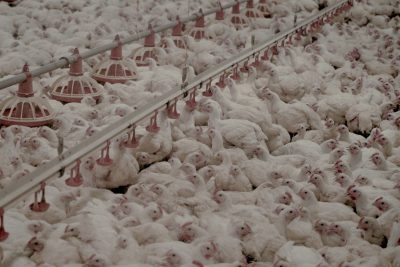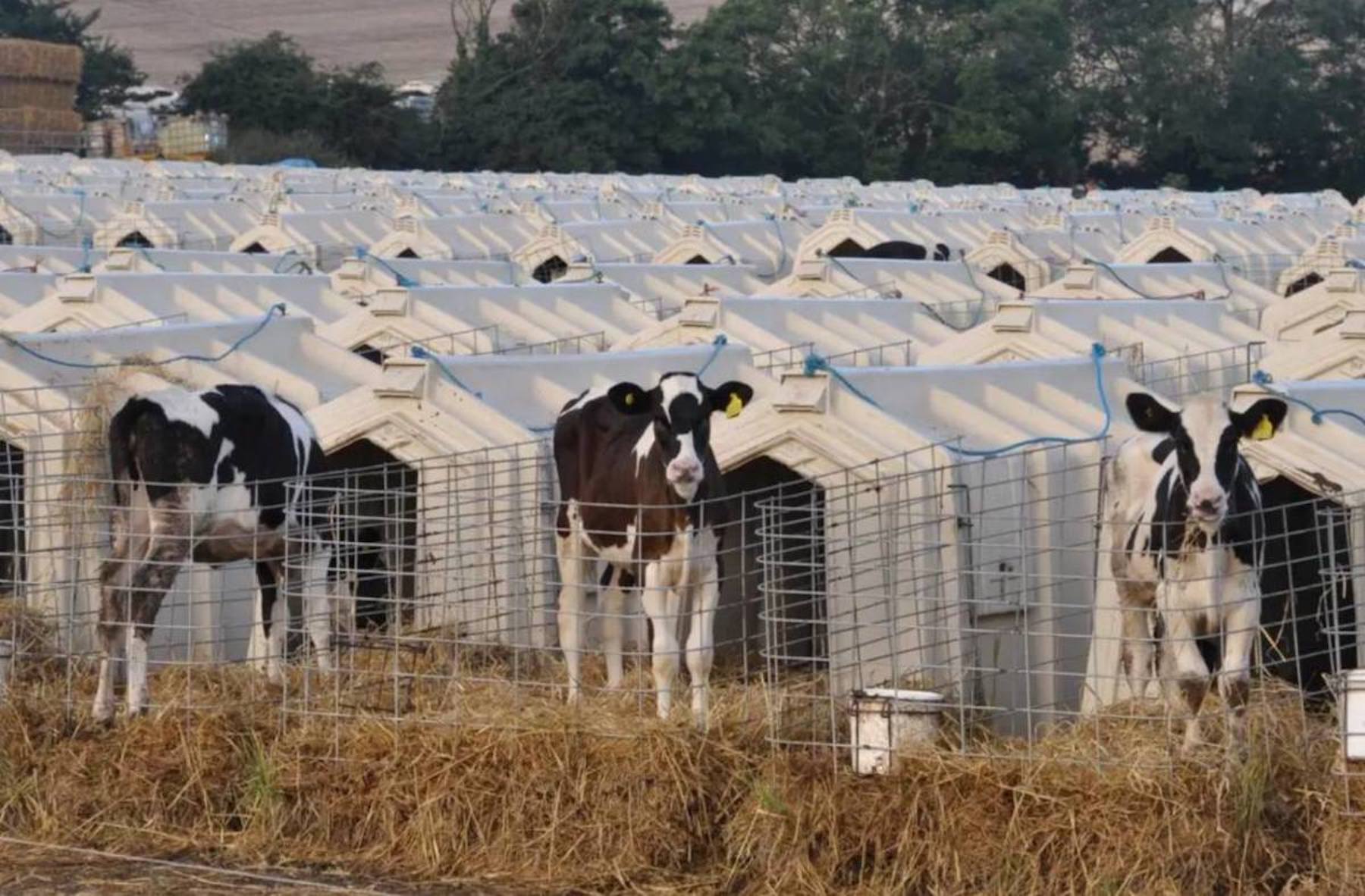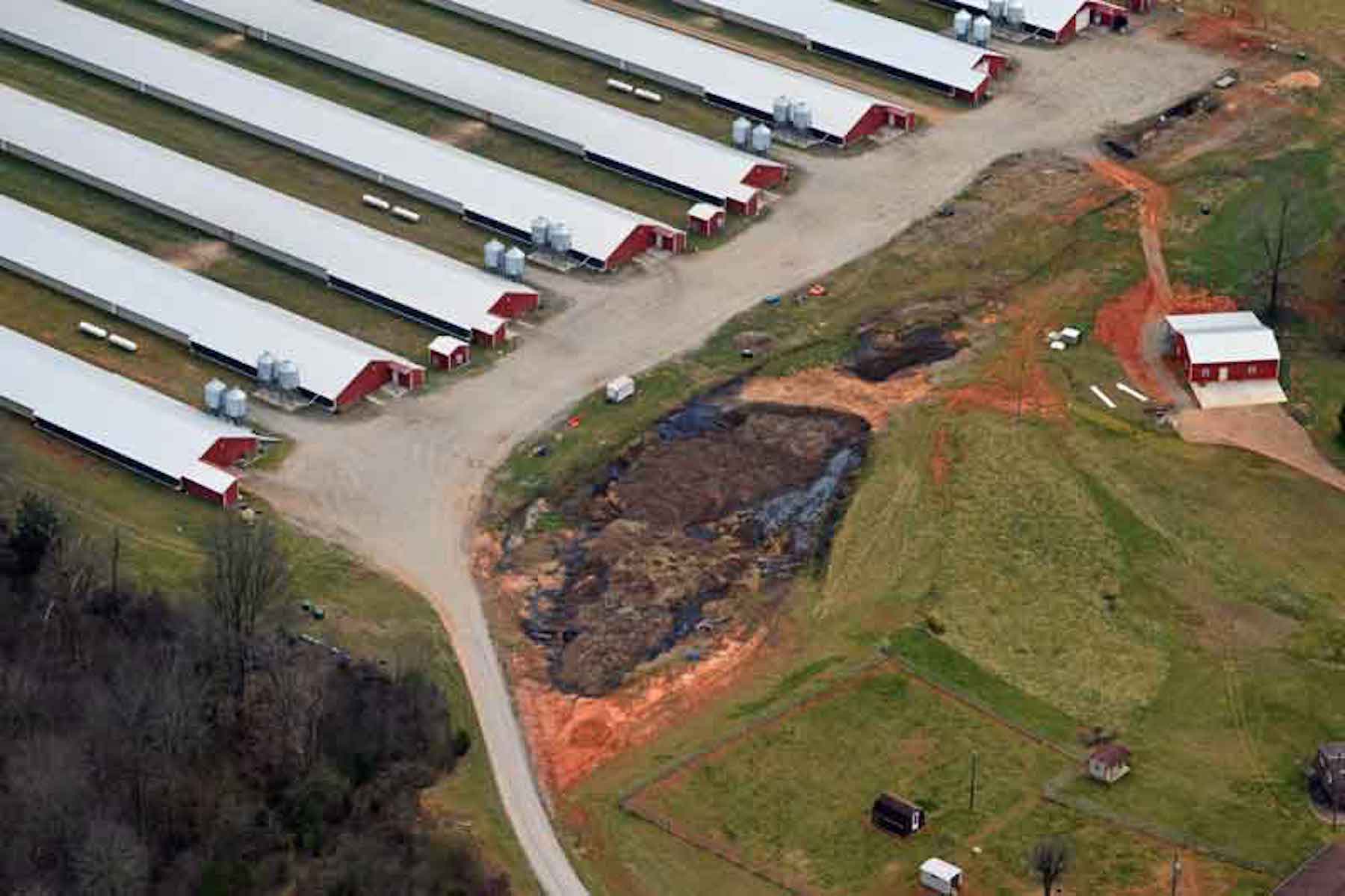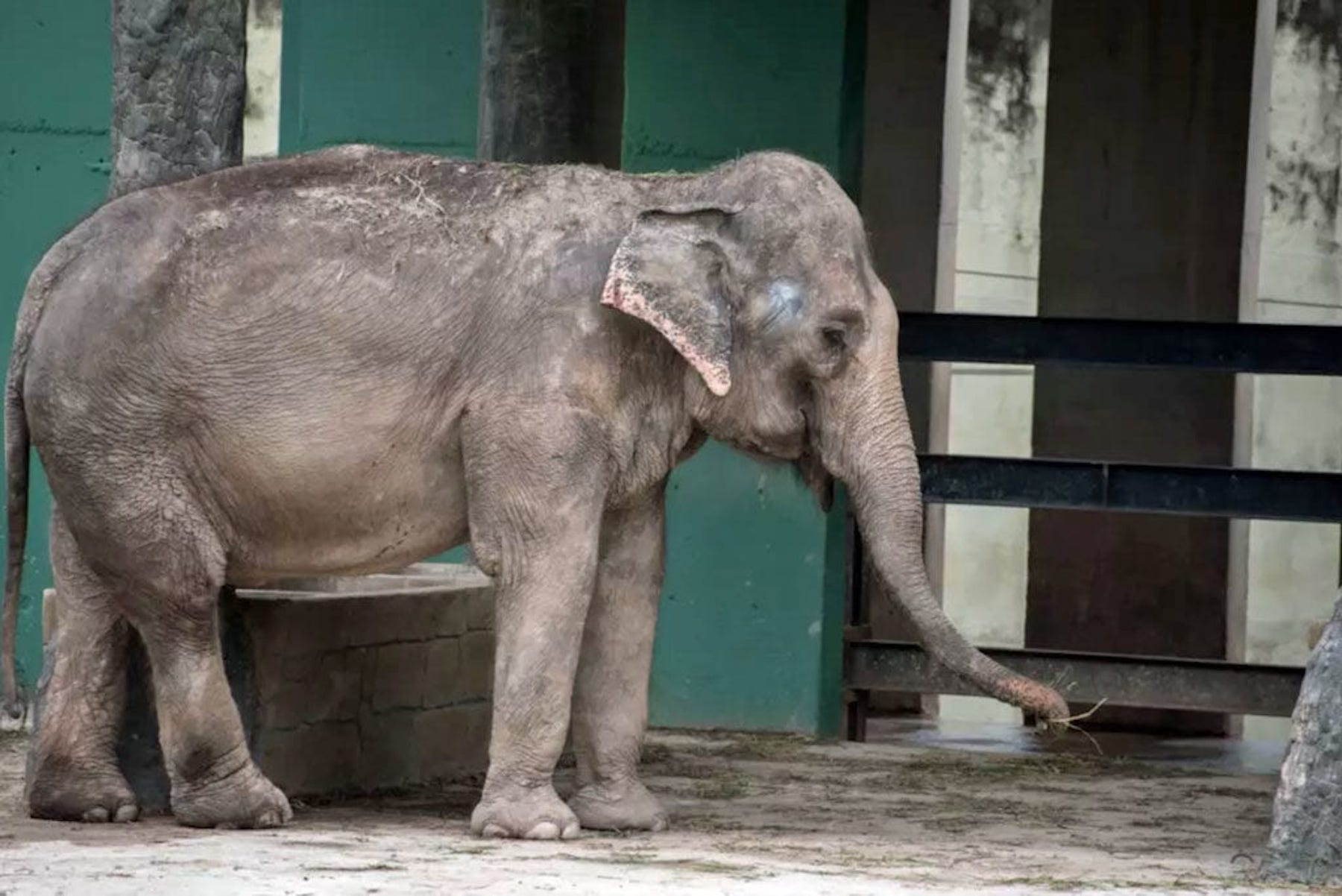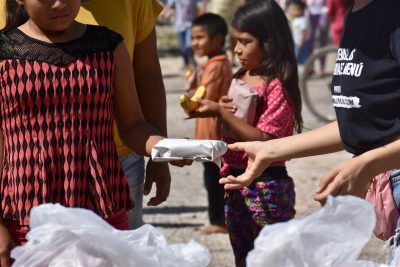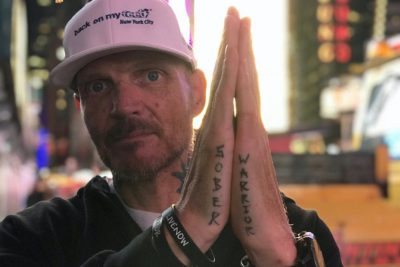Confining animals has a huge impact, not just on the animals themselves, but on our own health and the health of our planet. So why do we confine animals, and how did things get so bad that we risk our very future?
What is Animal Confinement?
Billions of farmed animals around the world are confined in cages or crates so small they can barely move. Pigs, chickens and calves are most routinely confined in this way, despite them being sentient beings who suffer. For these animals, release from their debilitating confinement may come only on the day they are sent to slaughter.
Confinement and deprivation are the very hallmarks of “factory farming”- we cram them in and sell them cheap. It is something our grandchildren may struggle to believe we ever sanctioned.
The Rise Of Concentrated Animal Feeding Operations (CAFOs)
Gone are the days where a few farmed animals would be kept on a small family-owned farm. Today, production has scaled up, with most meat, egg and dairy products coming from animals kept on large, high-density farms, often with corporate contracts.
There are around 20,000 industrial-sized operations in the US, in which farmed animals are kept in confinement for at least 45 days without access to vegetation. They began with the advent of intensively farmed poultry in the 1950s, and by the 1980s, cows and pigs were also increasingly confined in CAFOs.
Despite the huge and negative impacts of farming intensively like this – for the environment, people and animals – the number of CAFOs in the United States continues to rise.
Pigs And Gestation Crates
Gestation crates are metal cages with bare slatted floors that are so small a sow may only stand or lay down, but she can neither turn around nor take a step forward or back. Once inseminated, sows are confined in these contraptions for their entire 16-week pregnancy. This is a time when they would naturally walk for miles to find a safe space in which to create their nest. In the cages, sows can be seen desperately trying to make a nest although they are afforded no materials at all.
Research shows that pigs are as smart as chimpanzees. They can play video games, are great at solving mazes, can comprehend symbolic language and can learn complex combinations of symbols for actions and objects. They have good long-term memories, which means they are unlikely to forget the crates, even when they are released from them.
According to neuroscientist Lori Marino of Emory University, “pigs share a number of cognitive capacities with other highly intelligent species such as dogs, chimpanzees, elephants, dolphins, and even humans.” We should ask ourselves: would we treat any of those other species this way?
Chickens And Battery Cages
There are two distinct breeds of chicken that have been purpose-bred by the farming industry – those who put on weight fast and so can be exploited and killed for their meat, and those who are able to produce a large number of eggs, despite being fed minimally. In the US, the majority of hens used for their eggs are caged.
Inside, each hen has no more space than a single sheet of letter-sized paper. They cannot spread their wings, and nor can they dustbathe, nest, forage or scratch in the earth – all natural behaviors for these bright birds. They cannot even sit on a clutch of eggs but can only watch as those eggs roll away. Hens are excellent mothers – hence the phrase ‘mother hen’ – and being unable to care for young is a serious deprivation.
In those cages, which damage their feet, and in which they live out their entire lives, the birds are denied everything that makes life worthwhile.
Calves And Veal Crates
Even today, there are many people who do not know that cows – like all mammals – must be impregnated to produce milk, and that their milk is not intended for our cappuccinos but to feed their growing calf. From the human perspective, this calf is no more than an unwanted by-product. After all, we just want the milk. But from the mother’s perspective, the calf is her child and both mother and calf grieve when they are separated, as commonly happens immediately after birth.
Because male calves cannot produce milk and are not considered fit to be raised for beef, they are instead taken from their mothers so they don’t drink any of that valuable milk. They are confined and chained inside crates so small they cannot turn around.
Instead of taking their mother’s milk, they are fed a formula that keeps them alive but deliberately lacks iron so that their flesh remains pale and “borderline anemic” – a requirement of consumers. It comes at a cost. These young animals are prone to enteritis and diarrhea, digestive infections and ulcers. What is considered a culinary delicacy is in reality a sickness.
Environmental Impacts Of Extreme Animal Confinement
Of all the mammals on Earth, an incredible 60 percent are farmed animals who have been purpose-bred and kept in artificial conditions. When we confine unnaturally large numbers of animals all together like this, there is bound to be an environmental price tag. There is. And it’s huge.
First, breeding, rearing and slaughtering billions of animals is one of the biggest drivers of climate breakdown. In fact, animal agriculture produces more damaging emissions than the fuel used in every car, ship, truck, train and plane on the planet. Climate change impacts all life on Earth which makes animal agriculture a global threat.
Plus, with so many animals all in one place, vast amounts of food are needed to keep them alive. Since the animals are not permitted to graze or forage, their feed is grown elsewhere – all too often on deforested lands – and trucked or flown to them, exacerbating climate change and driving habitat loss and the decimation of wild species.
CAFOs have a detrimental impact locally, too, particularly through the production of so much slurry. Some large farms can produce more waste per year than some US cities. There is too much for the earth to absorb, and so it runs off the land, or leaches out of the storage facilities, and pollutes ground, waterways and the air.
The waste from CAFO-confined animals also contains a variety of potential contaminants, including nitrogen and phosphorus, pathogens such as E. coli, growth hormones, antibiotics, chemicals, and animal blood.
Such contaminants are responsible for the emergence and growth of algal blooms and ocean dead zones – areas so deprived of oxygen that wild aquatic species can only flee or die.
Human Impacts of Extreme Animal Confinement
With the pollution of air, water and ground, it is inevitable that people who work in or live near these farms will be affected, too. Not only are farm workers at risk of death from inhalation of methane from the waste – even in the open air – but CAFOs are also implicated in causing respiratory diseases and allergic reactions.
Health issues are not confined to workers but also affect local residents. Research shows that living 1.5 miles from a CAFO is associated with an increased likelihood of suffering nasal allergies, lung allergies and asthma when compared to living five miles away.
For local residents, quality of life can suffer badly. Flies and mosquitoes can make spending time outdoors unbearable while the stench and air quality can cause eyes to burn and noses to run. One study found: “Air pollutants from the routine operation of confinement houses, cesspools, and waste sprayers affect nearby neighborhoods where they cause disruption of activities of daily living, stress, anxiety, mucous membrane irritation, respiratory conditions, reduced lung function, and acute blood pressure elevation.”
Farm Animal Confinement Bans By State
While the number of CAFOs continues to rise, some states are at least taking steps to end the worst aspects of farmed animal cruelty by banning extreme confinement. The first state to pass a law was Florida in 2002, and since then several others have followed suit. The following states have enacted laws to date.
-
Arizona
In 2006, Arizona prohibited the confinement of calves reared for veal and pregnant sows where the animals cannot lie down, fully extend their limbs or turn around freely for the majority of the day.
-
California
In 2008, California prohibited the confinement of calves reared for veal and pregnant sows where the animals cannot lie down, fully extend their limbs or turn around freely. In 2010, legislation passed to ban the in-state sale of shelled eggs from caged birds, and in 2018, additional legislation set out the minimum permitted space for crates and cages, and banned the in-state sale of veal, pig meat and liquid eggs that come from animals reared in intense confinement.
-
Colorado
In 2008, prohibited the confinement of calves reared for veal and pregnant sows where the animals cannot lie down, fully extend their limbs or turn around freely.
-
Florida
In 2002, Florida led the way by prohibiting gestation crates that prevent pregnant pigs from turning around freely.
-
Kentucky
Veal crates were phased out by December 31, 2017 with the law stating that calves raised for veal must be able to stand without impediment, rest in a normal posture, groom, and eat.
-
Maine
In 2009, Maine prohibited the confinement of calves reared for veal and pregnant sows where the animals cannot lie down, fully extend their limbs or turn around freely for the majority of the day.
-
Massachusetts
In 2016, Massachusetts went further and announced that all veal crates, gestation crates and battery cages must be phased out by 2022. The in-state sale of meat and shell eggs from animals intensively confined in those conditions was also prohibited.
-
Michigan
In 2009, Michigan prohibited the confinement of calves reared for veal and pregnant sows where the animals cannot lie down, fully extend their limbs or turn around freely for the majority of the day.
-
Ohio
In 2010, Ohio set out regulations that require calves raised for veal to be housed in groups, and to be able to stand without impediment, rest in a normal posture, groom, eat, turn around and lie down. From 2025, the state will also limit the duration sows can be confined in gestation crates.
-
Oregon
Oregon has passed three sets of legislation, starting in 2007 with a ban on confining sows for more than 12 hours in a way that does not allow them to lie down, fully extend their limbs and turn around freely. In 2011, it set in motion the phasing out of battery cages by 2026 (although birds will be confined in larger cages – a missed opportunity to create a much kinder system). And in 2019, legislation banned the in-state sale of eggs from hens housed in intense confinement by the end of 2023.
-
Rhode Island
In 2012, Rhode Island prohibited the confinement of calves reared for veal and pregnant sows where the animals cannot lie down, fully extend their limbs or turn around freely. In 2018, it legislated that hens in battery cages must be able to fully stretch their wings without touching the sides of the enclosure or other birds.
-
Washington
In 2011, Washington passed legislation requiring farms with more than 3,000 hens kept for their eggs to increase the amount of space permitted for each bird. And in 2019, it banned the in-state sale of eggs from cruelly confined hens by 2023 and increased the amount of minimum space for each bird.
What About Animal Confinement In Zoos, Circuses and Aquaria?
Farmed animals are most commonly cruelly confined – but they are not the only species to suffer this way. Animals kept for entertainment in zoos, circuses and aquaria endure similar treatment – with their natural behaviors denied them. They are kept in small spaces with little to occupy their active minds; their young are taken from them and sold. In zoos, many animals live a half-life – just breathing, eating and enduring.
Among the worst affected are elephants who may be forced to live alone for decades despite naturally being social animals who live in matriarchal herds. One study found that of the 390 elephants who had died in US zoos in the past 50 years, the majority did so from injury or disease directly related to the conditions of their confinement.
For animals displayed by circuses, life on the road takes a heavy toll. “It’s no one single factor,” says Stephen Harris of the University of Bristol, UK, and lead researcher of a study into the welfare of animals in circuses. “Whether it’s lack of space and exercise, or lack of social contact, all factors combined show it’s a poor quality of life compared with the wild.”
Elephants can be shackled for 12 to 23 hours per day when not performing, in areas no more than 12 square metres. Often, they could only move as far as the chain around their leg allows them – just 1 to 2 metres. In the wild, elephants spend up to 75 percent of their time feeding, and cover up to 50 kilometres in a day.
It’s not just elephants who suffer, of course. Lions, tigers, bears, parrots, and many other species adopt repetitive abnormal movements and pacing, called stereotypies. These are signs that the animals are deeply distressed, and they occur in farmed animals, too. Sows in crates building imaginary nests is one example, but there are others – such as repetitively biting or licking the bars that hold them or ‘vacuum chewing’, where they chew on nothing at all, as there is nothing there for them to chew on.
Conclusion
The close confinement of animals on farms is a terrible indictment of modern society and yet it is not an abstract issue over which we have no control. As consumers and citizens, it is very much within our power to end this treatment of our fellow animals.
First, we can support groups like the Animal Legal Defense Fund and HSUS as they lobby to enact laws that protect animals from the worst confinement.
But we can do more. Each of us can make one powerful change in our lives that will end this cruelty forever. We can join the millions of people around the world who have made the decision to stop eating animals, and we can start right away.
Find out more about eating a plant-based diet and get a free Vegan Starter Kit, Health & Nutrition Guide and delicious, healthy recipes on our website.
